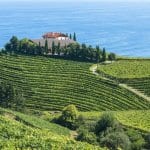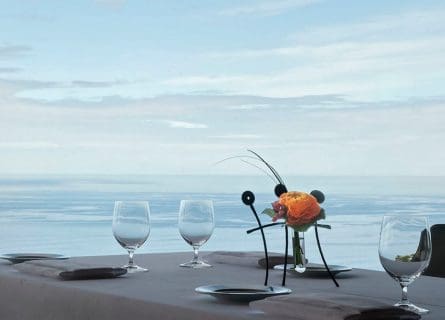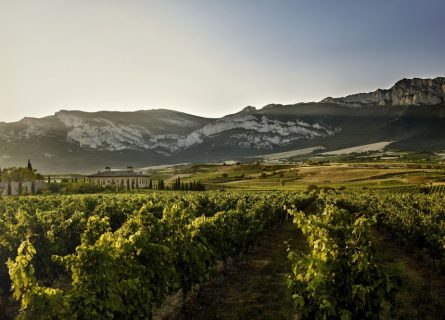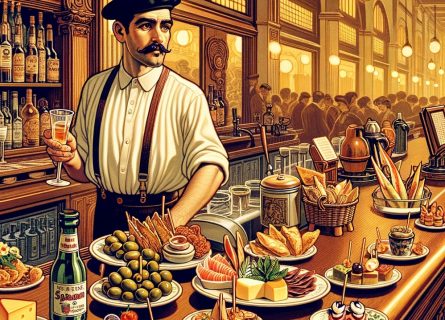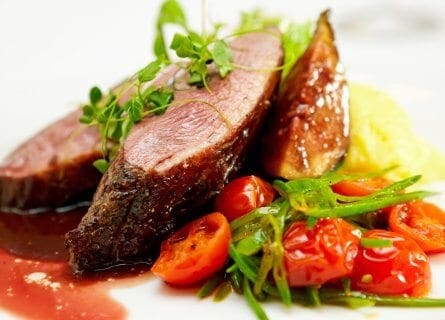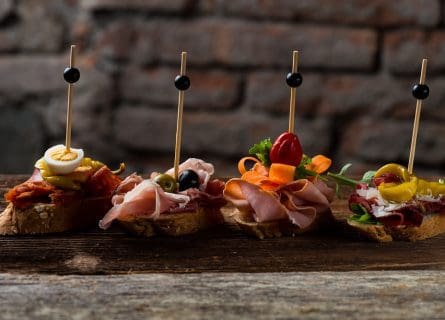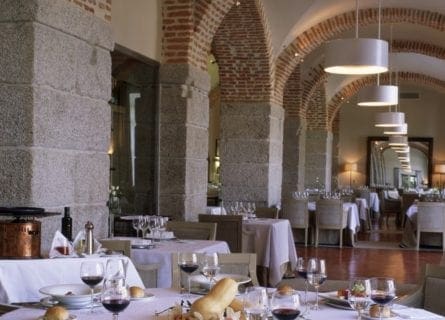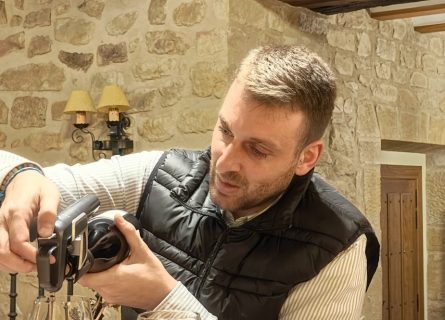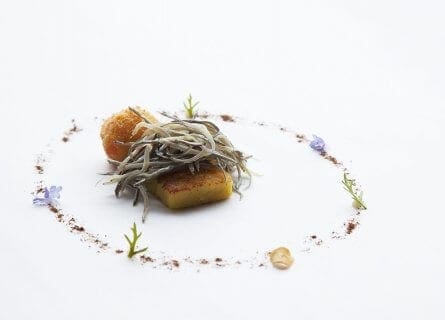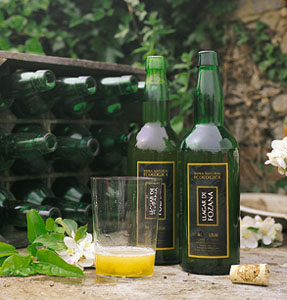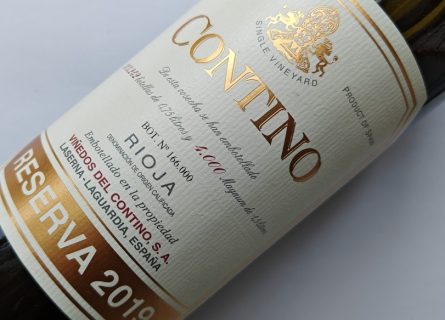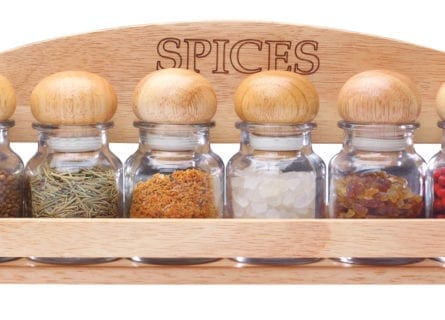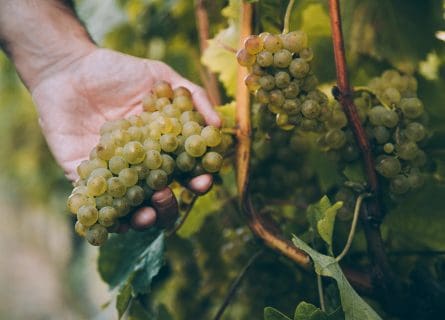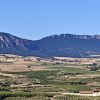
Basque Country Wine Regions Guide
Discover the Essence of Basque Terroir: Unveiling the Enchanting Wines of the Basque Country!
EXPLORE ALL OUR GUIDES: SPANISH WINE REGIONS
Last updated: August 7, 2024
Introduction
The wines of the Basque Country are probably Spain’s biggest secret. Like the Basques themselves, these crisp, dry whites were once enigmatic and difficult to understand. Wine lovers, nourished on New World Chardonnay, would struggle with the Hondarrabi grape’s aggressive acidity and low alcohol, named after the pretty seaside town of Hondarribia. But global warming has added some flesh – and body – to these (formerly) harsh acidic wines while growing tourism is starting to put Txakoli on the international map. And, of course, winemaking has improved out of all recognition in the last 15 years.
However, this isn’t the only vinous treasure to be found in the Basque Country. In administrative terms, the Rioja Alavesa subregion belongs to the Basque province of Alava; this seemingly haphazard arrangement owes more to the political structure of post-Franco Spain than to the actual distribution of the vineyards. In recent years, separatist politics has reared its head in this part of the Basque Country, as winegrowers in Rioja Alavesa voiced a desire to leave the Rioja DO and create a new designation: Viñedos de Álava. Even a landscape as serene and bucolic as Euskadi can have its political tremors.
Discover more about Spanish Wine
History
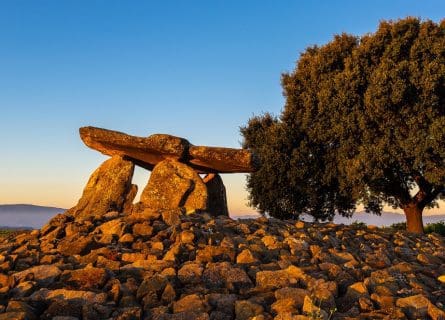
The Basques are a race apart – they will not let you forget that their culture differs from any in Spain. Unrelated to any other language, the Basque dialect, Euskera, is believed to be the oldest language in Europe.
Anthropologists think they could be descended from Cro-Magnon people who emigrated from the Pyrenees about 40,000 years ago. The dolmens and cave paintings found today in the region are evidence of this race’s incredible roots.
Describing the Basques’ history since the Roman period is no easy task; isolated for long periods in their mountain valleys, they preserved their unique language and culture for centuries, almost untouched by other influences. Thus, the Roman conquest of the Iberian Peninsula in the 3rd century BC did not affect this corner of northern Spain; the Romans largely ignored the province, mainly because of its challenging terrain and inclement weather.
Likewise, the Visigothic invasion of the 5th century was no less unimportant to the Basques – ditto the arrival of the Moors in 711. As a result, Euskadi is one of the few parts of Spain that never experienced any Muslim rule.
However, during the Christian Reconquista (reconquest) of the Middle Ages, the Catholic monarchs pursued a grand unification project as the Moorish armies were pushed south into Andalucia. This included the verdant landscape of the Euskadi, although securing the loyalty of three Basque regions (Alava, Guipuzcoa, and Vizcaya) was not easy. In the end, the fiercely proud Basques (and their Navarran neighbors) agreed to submit to a centralized Spanish state in name only; they obtained considerable economic and political independence via a series of laws known as the fueros.
Political Tensions in the 19th Century
These wide-reaching and important autonomy statutes continue to be the linchpin of Basque nationalism. However, not every Spanish monarch was willing to tolerate a ‘state within a state’ in the Iberian Peninsula. In the 19th century, a conflict known as the Second Carlist War erupted over the succession, fought between the Carlists and Liberal factions.
After liberal revolts and the short-lived First Republic, authorities stripped the Basque Country of its cherished fueros, creating more discord. Nevertheless, the region’s capital, Bilbao, flourished as an industrial city in the 1800s, when iron ore began to be extracted from mines situated northwest of the city. Soon, steelworks and factories became a major part of the local landscape, generating wealth and prosperity.
Unfortunately, oidium (powdery mildew) also arrived in the 19th century, rendering viticulture uneconomical due to the constant humidity of this Atlantic-influenced region.
Politically, though, the situation was looking more positive. The formation of the Second Republic was good news for the Basques; established in the 20th century, the government offered Euskadi home rule in 1936 – two provinces out of three accepted. Sadly, they came to bitterly regret this decision after General Francisco Franco won the Spanish Civil War; Franco abolished any notion of regional autonomy during his autocratic rule, suppressing the fueros and outlawing the Basque language.
Since the arrival of democracy in 1975, however, the Basques have regained what they lost, running their own parliament and police force. At the same time, investment has poured into the Basque Country’s formerly ailing vineyards, improving viticultural techniques and replacing rustic equipment with the latest fermentation vessels.
As a result, the region stands tall today—a beautiful and culturally sophisticated asset that makes Spain proud. And tourists cannot get enough of this zesty, refreshing white (Txakoli), which can be tricky to pronounce!
Geography and terroir
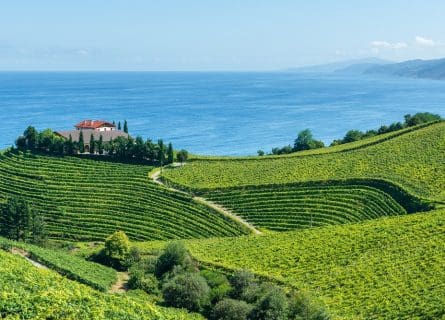
Green hills meet Atlantic beaches in the Basque country: a tourist paradise producing a surprising volume of appetizing wine. The scenery in northern Spain is utterly gorgeous, a mosaic of rocky coves, steep cliffs, and broad bays of fine yellow sand interspersed with cute fishing villages. The interior, meanwhile, is very undulating, characterized by valleys, gorges, and wooded hills. Vineyards are planted throughout this diverse region along the coast and further inland.
Only certain varieties, however, can thrive in the maritime climate of the Basque Country, with generous rainfall, (relatively) mild summer temperatures, and frequent downpours during the fall. The three key Txakoli appellations – Txakoli Getaria, Bizkaia, and Arabako Txakolina – encompass various soils and mesoclimates, ranging from clay-limestone to sandy loam.
The higher-altitude climats of the interior tend to be cooler than some of the coastal sites; the best terroirs enjoy a sheltered location with a southeastern aspect. This helps the berries to attain a reasonable level of sugar and flavor ripeness – reasonable in the context of the climate, that is!
A Premier Wine-Producing Area
Meanwhile, Rioja Alavesa’s vineyards are among the most highly exalted in the entire appellation. It is the most Atlantic of all the three subregions, albeit the majestic Sierra de Cantabria shelters the vines. The vineyards can rise to over 750 meters in the Alava province, hence the zone’s reputation for producing wines with good acidity and balanced alcohol.
In Alava, over three-quarters of the land is planted to vines; this hilly landscape is defined by many small parcels owned by bodegas and growers on terraces eroded by the river over the centuries. Calcareous soils dominate here, perfectly balancing moisture retention and good drainage.
Winemaking and regional classifications
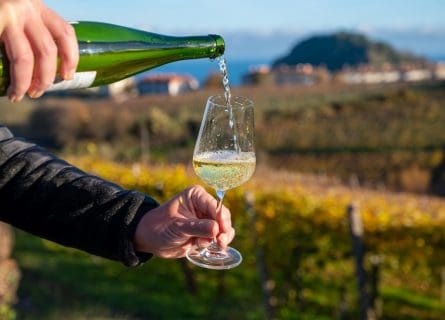
Basque wines are a product of the local climate, and terroir – opulent reds and powerfully structured whites are not its USPs. Instead, you’ll find an ever-growing volume of fresh, elegant, light white wines and a small amount of red. Excluding the wines of Rioja Alavesa (covered elsewhere), the cool climate of northern Spain is conducive to moderate alcohol, ripeness, and bracing acidity.
These are all qualities that make Txakoli wines so utterly suited to the role of aperitif. They also accompany the wonderful bar snacks known as pintxos (Basque tapas served on bread and impaled with a toothpick). Together, they amount to gastronomic heaven.
The backbone of Basque whites has long been the Hondarrabi Zuri grape, increasingly blended with Hondarrabi Zuri Zerratia (Petit Courbu), Mune Mahatsa (Folle Blanche), and Izkiriotas (Petit and Gros Manseng). Winemakers feel these aromatic grapes can add perfume and structure to the final product, although others steadfastly refuse to deviate from 100% Hondarrabi Zuri wines. Moreover, the variety is well suited to the damp climate of Euskadi, yielding a reasonably plentiful crop of aromatic berries that produces a low-alcohol and zippy style of white.
Innovations and Preferences
Much has changed in terms of winemaking over the past twenty years; indeed, the rustic methods of the 20th century have been put out to pasture, replaced with careful handling of the juice, cool fermentation in stainless steel, and bottling at a very young age. As a result, many Txakoli wines are bottled on their lees, imbuing them with a gentle effervescence that wine lovers generally find very refreshing.
Leading winery Ametzoi, for example, also tends to chill the wines to 32 degrees Fahrenheit before bottling— this helps to retain that noticeable ‘spritz’ in the wine. Occasionally, producers will subject their best cuvées to maturation in wood, although we prefer the unadulterated purity of unoaked Txakoli. Still, certain sommeliers and consumers love this fuller expression of the local terroir.
Diversity in Basque Wine Offerings
However, clean-cut whites with bracing acidity aren’t the only specialty of the Basque Country. Due to market demands, an increasing amount of red and rosé is made to the delight of critics everywhere. Red Txakoli can be absolutely delicious: a light-bodied and refreshing bright fruit concoction with peppery aromas and a touch of eucalyptus on the finish. As you’d expect, high alcohol and over-extraction are seldom a problem in the windswept vineyards of northern Spain.
Facts & Figures
Key wine styles
- Crisp and light-bodied whites, elegant red and rosé wines. A wide variety of styles are produced in Rioja Alavesa.
Appellation structure
- DO Txakoli Getaria, Txakoli Bizkaia and Arabako Txakolina
Hectares under vine
- 400 hectares in Basque country; approximately
- 12,000 hectares in Rioja Alavesa approximately
Average annual production
- 3.5 million bottles of Txakoli. 30 million liters of Rioja Alavesa.
Approximate number of producers
- 88 wineries producing Txakoli. 150 wineries belong to ABRA (Association of Rioja Alavesa winemakers)
The lowdown
After being ignored and marginalized for decades, the Basque Country is in full ferment. The burgeoning market in culinary tourism has done much to revitalize the region’s Txakoli industry – new players, revitalized historic wineries, better vineyard management, and soaring quality across the board now define this niche – and quality-focused – industry.
This is all very different, of course, from the situation in the 20th century, when Txakoli was tart dross: fiercely acidic and quite unpalatable to many consumers.
As the critic and journalist Pedro Ballesteros Torres MW observed:
“The 1970 Spanish Wine Law defined Txakoli as wine made with grapes ‘that cannot normally reach full ripeness’ because of climate constraints. This was a protective measure to ensure the regular production of Txakoli; otherwise, it could not be legally classified as wine, since the bottles often did not reach the minimum legal level of alcohol.”
Impact of Climate Change
It must be said, however, that climate change is partially responsible for this shift of fortune: ripeness is now far easier to achieve, and acid levels are far more manageable compared to 30 years ago. But growers have also learned the value of intelligent site selection, planting vines in warmer and sheltered spots along the coast and interior. The net result is that Txakoli no longer assaults the palate. On the contrary: it is a joy to drink.
The situation in the province of Alava, meanwhile, remains highly contentious. Recently, the members of ABRA (Association of Rioja Alavesa winemakers) announced that an interim regulatory council was being set up to eventually regulate the production of DO Viñedos de Álava. For many Rioja producers situated in the Basque Country, this would replace the Rioja DOCa as their appellation of choice.
As you might imagine, the Rioja authorities are less than thrilled about the idea, claiming that Viñedos de Álava represents an unpleasant slide into divisive Basque nationalism. Nevertheless, many of Rioja’s Alavesa’s top bodegas wish to sell their wines under a different banner, including producers who are not Basque nationals. A major legal challenge is undoubtedly on the cards without compromise.
Basque Country Appellations
-
 Experience the rich flavors of Rioja Alavesa wines. Explore its vineyards and wineries for a unique wine-tasting adventure. Plan your trip today! Read more
Experience the rich flavors of Rioja Alavesa wines. Explore its vineyards and wineries for a unique wine-tasting adventure. Plan your trip today! Read more -
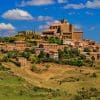 Discover the essence of elegance and flavors of Navarra. Explore top wineries, vineyards, and tasting experiences. Plan your trip today! Read more
Discover the essence of elegance and flavors of Navarra. Explore top wineries, vineyards, and tasting experiences. Plan your trip today! Read more -
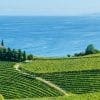 Learn about the vibrant flavors of Txakoli wine amidst breathtaking Basque landscapes. Explore our comprehensive guide. Plan your trip today! Read more
Learn about the vibrant flavors of Txakoli wine amidst breathtaking Basque landscapes. Explore our comprehensive guide. Plan your trip today! Read more
Key Grape Varietals
-
Hondarrabi Zuri (Courbu)
Unveiling the charm of the Hondarrabi Zuri grape. Explore its origins, unique flavor profile, and its role in crafting exquisite Txakoli wines.
Find out more -
Izkiriotas (Gros and Petit Manseng)
Explore Gros Manseng, a captivating white wine grape flourishing in South West France's Jurançon region. Unveil its delightful flavors!
Find out more -
Mune Mahatsa (Folle Blanche)
-
Riesling
Discover Riesling's charm, a white grape from Germany's Rhine region, cherished in Alsace, France. Unveil its secrets and delights
Find out more -
Sauvignon Blanc
The sauvignon blanc grape varietal, originally from the Bordeaux region of France, is now one of the world's most loved white varieties.
Find out more -
Viura
Discover Viura: Rioja's Prominent White Grape & Catalonia's Macabeo. Explore its versatility in exquisite wines. A must-read for wine enthusiasts.
Find out more -
Garnacha
Garnacha: Spain's Red Gem. Akin to Pinot Noir, it bridges terroir and winemaking, crafting captivating expressions.
Find out more -
Graciano
Graciano is a red grape variety that is primarily grown in Spain's Rioja region. Known for its thick skins, small berries, and low yields, this grape produces wines that are deeply colored, highly tannic, and full-bodied, with a range of aromas from dark fruit to spices and leather
-
Hondarrabi Beltza
Hondarrabi Beltza is a captivating red grape variety from the Basque Country, known for producing vibrant and fruit-forward wines. With its deep color, lively acidity, and enticing red berry aromas, Hondarrabi Beltza offers a unique taste of the coastal terroir and the lesser-known side of Basque winemaking.
-
Mazuelo (Carignan)
Carignan is a red grape variety that grows mostly in Southern France, and is often used as a blending grape
Find out more -
Tempranillo
Discover Tempranillo: Spain's iconic red grape. From Ribera del Duero to Toro, it yields concentrated wines. Explore its synonyms and unleash its prowess.
Find out more
Basque Country gastronomy
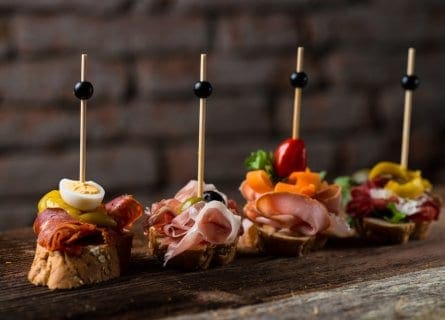
You may have heard that Basques are wizards in the kitchen. It’s a reputation well deserved: some of Spain’s finest restaurants are found in northern Spain, including several three-Michelin-starred venues with spectacular views of the Atlantic. They continue to wow the critics with their sophisticated – and nuanced – take on classical Basque cuisine. But for many visitors, the greatest pleasures are found in the endless tapas bars of Bilbao and San Sebastian, where delicious pintxos come in a staggering variety of guises. Needless to say, fresh seafood always features heavily on the menu.
Guide to Basque Gastronomy: Read more
Recommended Wineries
-
Itsasmendi
Experience the essence of Basque wines at Itsasmendi Winery. Discover Txakoli wines, crafted with passion and tradition. Plan your trip! Read more -
Talai Berri
Discover Talai Berri Winery, a boutique winery in Zarautz, Basque Country. Experience Txakoli wines and the rich tradition of winemaking. Plan your visit now! Read more -
Txomin Etxaniz
Explore Txomin Etxaniz Winery and experience the finest Txakoli wines in the captivating Basque Country. Plan your trip! Read more
Nearby Charming Towns and Cities
-
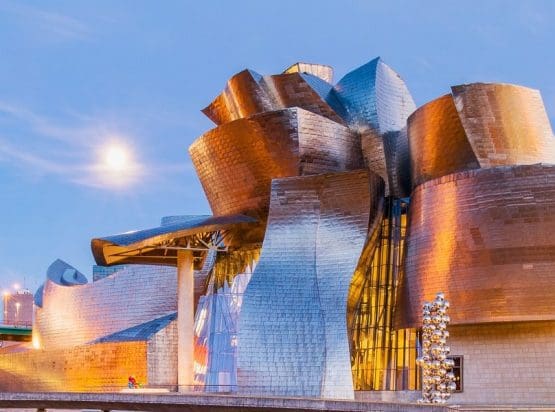
Immerse yourself in Bilbao's vibrant flavors and uncover hidden culinary gems with our expert insider guides. Plan an unforgettable trip today!
Read more
-
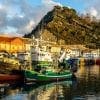
Immerse yourself in Getaria's vibrant flavors and uncover hidden culinary gems with our expert insider guides. Plan an unforgettable trip today!
Read more
-
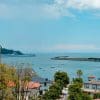
Immerse yourself in Hondarribia's vibrant flavors and uncover hidden culinary gems with our expert insider guides. Plan an unforgettable trip today!
Read more
-

Immerse yourself in San Sebastian's vibrant flavors and uncover hidden culinary gems with our expert insider guides. Plan an unforgettable trip today!
Read more

Immerse yourself in Bilbao's vibrant flavors and uncover hidden culinary gems with our expert insider guides. Plan an unforgettable trip today!
Read more
Immerse yourself in Getaria's vibrant flavors and uncover hidden culinary gems with our expert insider guides. Plan an unforgettable trip today!
Read more
Immerse yourself in Hondarribia's vibrant flavors and uncover hidden culinary gems with our expert insider guides. Plan an unforgettable trip today!
Read more
Immerse yourself in San Sebastian's vibrant flavors and uncover hidden culinary gems with our expert insider guides. Plan an unforgettable trip today!
Read moreFurther Reading: Discover More Related Blog Content
More information
If you would like us to customize an exclusive luxury tour, contact us and let us know your travel plans. We offer luxury food and wine tours for private groups of a mininium two guests. In addition, all of our private, chauffeured tours are available year-round upon request.

